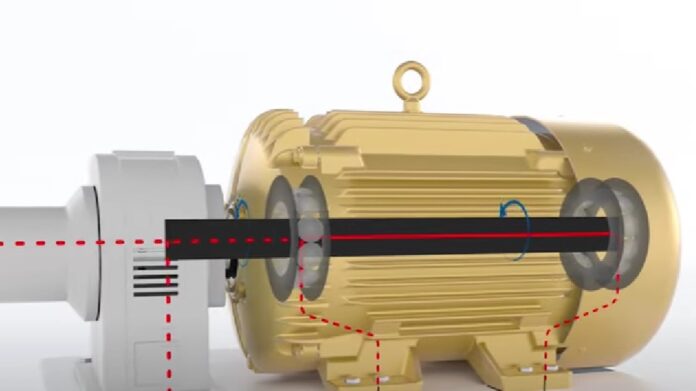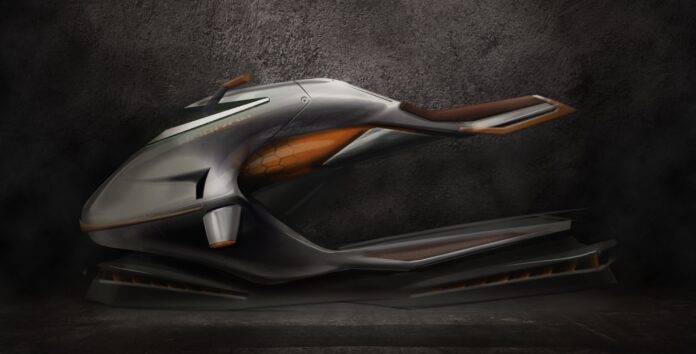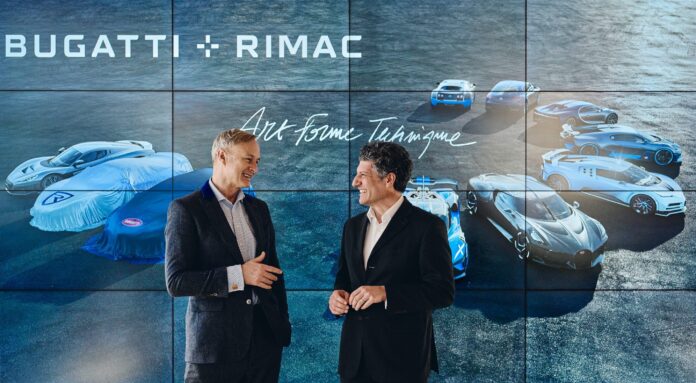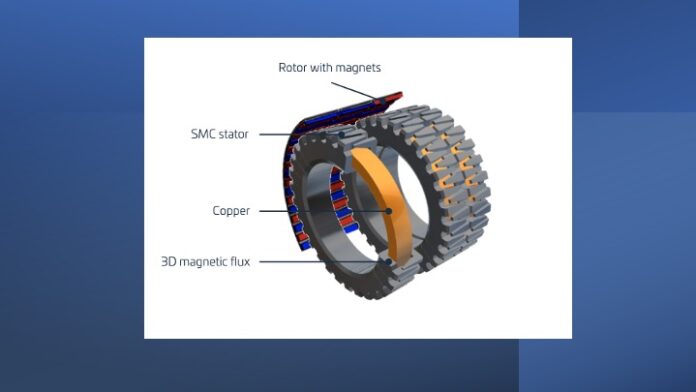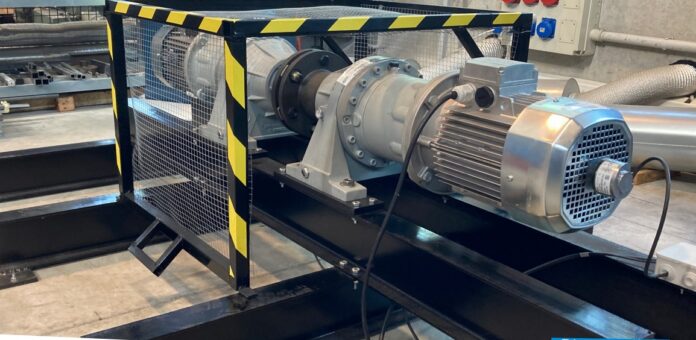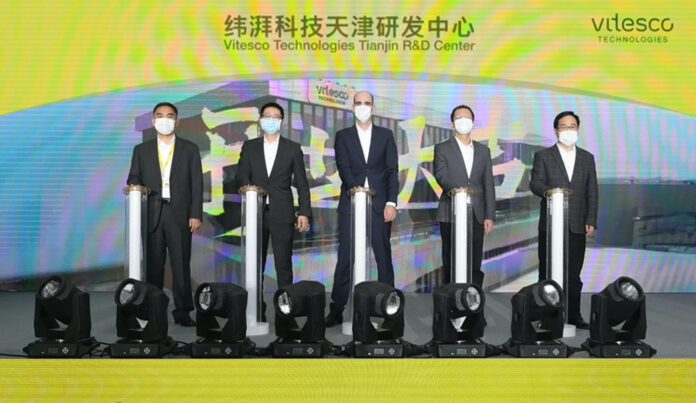Mandatory regulations are published worldwide for the efficiency of line-operated electric motors. Compact single-phase induction motors (SPIMs) will not be spared in terms of effectiveness and efficiency, as new restrictions are set to be implemented no later than July 2023. As a result, the efficiency of capacitor-run SPIMs will be required to exceed (now) normal values and meet the standards of the IE3 performance class. Less consideration has been given to the influence of rotors bar form on SPIM performance and starting capabilities. It is a key topic that has been investigated by a recent study concerning the rotor squirrel-cage layouts with eight distinct bar forms, published on MDPI academic container.
The study is entitled “Effect of Rotor Bars Shape on the Single-Phase Induction Motors Performance: An Analysis toward Their Efficiency Improvement”, Energies 2022, with authors Chasiotis, I.D., Karnavas, Y.L., Scuiller, F.
The already published research works investigated several design, control, and manufacturing aspects. Nevertheless, less attention has been devoted to the study of the rotor bar’s shape impact, both on the SPIMs’ efficiency and starting capability. This gap is filled in this work by examining rotor squirrel-cage configurations with eight different bar shapes for the case of a four-pole/1.0 HP capacitor-run SPIM. A sensitivity analysis, which involves the simultaneous variation of the bar’s cross-sectional area, run-capacitor value, and auxiliary to main winding turns ratio, is performed. The motor’s electromagnetic behavior is estimated through finite element analysis. Through the acquired results, useful directions toward the SPIMs’ efficiency enhancement are provided, while simultaneously conclusions—not found elsewhere—are drawn concerning performance quantities, such as the motor’s starting current, currents shift angle, particular losses and breakdown torque.
The stator and rotor core of the SPIM are composed of thin laminae of electrical metals. The squirrel-cage of the rotor is manufactured of a conducting alloy by die casting. Because of its inexpensive cost, aluminium alloy is more commonly used in the fabrication of tiny SPIMs, and it provides for greater freedom in the design of the bar.
The influence of rotors bar form on SPIM performance
Three phase Induction motor and an SPM motor
Hussain Shafi, Electric Vehicle Engineering Student at UNIBO has published a project in the ambit of the course Electric Motor Design delivered by Prof. Giacomo Sala.
«In this report we have designed a 3 phase Induction motor and an SPM (Surface Mounted Permanent Magnet) motor both with different specifications. All the analytical equations are implemented in Matlab for preliminary sizing of motor and useful graphs while the FEA analysis is done using FEMM software which is an open-source software that can simulate the Electromechanical models. By using some additional libraries for Matlab, and it is possible to see how it is done in the report».
The project involves designing and sizing of SPM Motor and Induction Motor and the thermal aspects were also realized in this project.
A 3-phase induction motor is an electromechanical energy conversion device which converts 3-phase input electrical power into output mechanical power. A 3-phase induction motor consists of a stator and a rotor. The stator carries a 3- phase stator winding while the rotor carries a short-circuited winding called rotor winding. The stator winding is supplied from a 3-phase supply. The rotor winding drives its voltage and power from the stator winding through electromagnetic induction and hence the name. IMs are less expensive, do not suffer demagnetization, and they are often more reliable and simpler to manufacture as compared to SPM motors. The disadvantage of this motor typology is its insufficient performance in terms of efficiency and power factor.
Hpe Coxa, artificial intelligence laboratories to develop electric motors
About two years ago Hpe Coxa, company specialized in services of engineering, design and precision manufacturing for the sectors of automotive, motorsport, automation, aerospace and defence, inaugurated in Modena the two E LAB and Ai LAB laboratories that establish the company’s collaboration with the Universities of Bologna and Modena in the most advanced technological fields. In particular, E LAB, in collaboration with the University of Bologna and UniMoRe, has made students work at the design, engineering and implementation of an electric motor, supervised by “senior” engineers: in just nine months they have given birth to a unique item, the “demonstrator”. Today, they go on innovating in that direction and in Modena the excellence centre for the Artificial Intelligence is established, due to the collaboration between Hewlett Packard Enterprise and HPE COXA, further raising the bar of the development of solutions, including electric motors. This synergy will lead them to explore together the new opportunities of the data age for the industrial sector.
Combining design skills and competences that range from high-performance mechanical engineering to the most recent IT technologies, the two partners will develop a common ecosystem committed to innovation and based on Open Innovation principles.
How contrasting shaft current problems
The big player ABB is casting its spotlights on what are shaft currents and how to protect AC motor. Over time, continual arcing within an electric motor will cause damage to the surface of the bearing raceway resulting in vibration and heat, loud operating noises, and eventually motor failure.
Fortunately, there are several practical and easy ways to mitigate shaft current issues. Using proper VFD cables and bearing protection will help protect the life of your motor and driven equipment.
Brush protection rings and insulated bearings are just a few ways to mitigate shaft currents that can harm the motor and equipment. Including these preventive measures will ensure peace of mind and increase the reliability of your inverter duty motor performance.
Electric flying motorbikes. Science Fiction?
In the collective imagination, it is associated with futuristic unreal movies. It seems instead that the electric motorbike is not so distant thanks to Horizon Aeronautics that will release an electric hybrid eVTOL hoverbike with an innovative system of variable-pitch hemispherical rotor.
The Hoverbike by Horizon, with a design studied to grant significant efficiency rises, features the look of a jet ski and it is powered by a compact hybrid-electric system.
The technological collaboration was signed with the innovative Blainjett Aviation start-up, which works at the aerodynamic propulsion. The developed solution is called Dynamic Variable Pitch (DVP), patented technology of the hemispherical rotors that allows generating higher speeds with smaller sizes.
What is the gap that makes the difference? To generate the forward thrust, instead of adjusting the angle of attack of a helicopter or of an eVTOL rotor, the DVP adjusts the pitch of rotor blades on half of rotors’ arc.
Concerning its overall dimensions, the aircraft will weigh about 380 kg and the sizes will be 2.70 metres per 1.20 metres, able to host from one to three passengers on board.
A super electric motor incoming
Winding-free, featuring excellent performances, low weight and volume. Here are the main features of the new motor at which is working the Emilia company Poggipolini, top player in titanium fasteners for Formula Uno and aerospace. The new motor will address aerospace and defence, but also the world of the electric traction for Motor Sport and high-end cars.
Concerning this, a key role will be played by the factory of the future “Speed Up Lab”, headquartered in the new factory at San Lazzaro di Savena, in an area of over 20,000 sq. m., close to the Manufacturing Center of Excellence inaugurated in 2019. Its mission is working in open innovation.
Recently, the company has established a partnership with Puglia startup Roboze to design and to manufacture the mechanical parts of electric motors, 3D printed with innovative materials such as Carbon Peek, a carbon-reinforced polymer. The collaboration will aim at accelerating the adoption of this new process technology, shifting from engineering to industrialization.
The technology of the new electric motors will be fully innovative and will precisely concern its operation, as well as materials, which will assure lower weight and simplification of architectures and manufacturing processes.
In Berlin the new engineering centre for Bugatti Rimac
In the German capital, a new design and engineering hub will be established and it will operate under a new German subsidiary called Bugatti Rimac GmbH. Berlin is a young and sparkling city, able to fuel technological start-ups, an epicentre for artists and designers.
However, the automotive company’s headquarters will always remain in Zagreb, with the vast majority of employees and a future expansion in Croatia.
It seems that some job positions are already open: Concept Chief Engineer, Head of High-Voltage Systems and Components, Head of Fine Mechanics and design roles with specific focus on interiors, exteriors and VR.
Adriano Mudri, previously design director of Rimac Automobili, will be appointed design director of a future sister company of Rimac focused on mobility, which will take care of developing state-of-the-art vehicles, which will be successively revealed.
«Bugatti Rimac GmbH – stated its CEO Mate Rimac – represents a new exciting business expansion. This new branch will be deeply involved in many new exciting hypercar designs we are looking forward to sharing with the world. Our team is expanding day by day and Bugatti Rimac GmbH represents an opportunity for the best in the sector to join us, to prove their skills and to be part of a company that is redefining the hypercar».
A novel powder-metal based TFM electric motor
Eckart Schneider, Director Business Development of GKN Powder Metallurgy, has communicated on his professional social channels he is designing and building a novel powder-metal based TFM – transversal flux motor – electric motor for the yet lightweight Novus e-motorbike. «Believe it or not, it’s going to push 5 times more torque than my beloved old flat-twin boxer engine or still up to 3 times more than the newest 1250cc 4V boxer engine at only 1/3rd of its weight». GKN, British multinational whose core activity is the implementation of components intended for industries in the automotive and aerospace sectors, has also recently announced its new Advanced Research Centre – created to develop next-generation eDrive systems powering future electrified vehicles and increase engineering capability in the UK to meet Net Zero commitment.
GKN Automotive is partnering with the University of Nottingham and Newcastle University to push the boundaries of eDrive technology and accelerate modular innovation. The world-class collaboration will focus on the development of ultra-high efficiency EDUs for future electric vehicles.
DiaPro 4.0, the study for motors’ sensors
Recently, at the scientific-technological pole of University of Ferrara, they have held the conclusive presentation event about the research activity results of DiaPro 4.0 project.
The target consisted in developing an innovative multi-sensor system for the malfunction detection and the forecast of future “health conditions” in rotors, gears, bearings and electric motors.
DiaPro4.0 has involved industrial research laboratories accredited to the Regional Network for High Technology with expertise in the field of mechanical transmissions and of diagnostics/prognostics, like MechLav, Intermech and Raw Power, and Bonfiglioli spa and Marposs enterprises. Current predictive maintenance systems for drives and gears feature reliability limits owing to the variability of operational conditions and incompatible costs with the application on medium-small geared motors.
The implementation of a demo-prototype of a multi-sensor system of predictive maintenance, based on Edge Computing architectural solutions, with forefront characteristics compared to current system, has led to a 30% -50% lower cost of the industrialized system compared to the available systems on the market, in addition to high diagnostic reliability.
Vitesco focuses more on Asia-Pacific region
Vitesco Technologies has inaugurated its new research and development center in Tianjin, China. From there, the company, a top player supplier of advanced powertrain technologies and e-mobility solutions, will increasingly serve the Asia-Pacific region with hybrid and electrified powertrain technologies to meet the rapidly growing e-mobility market. The new research and development (R&D) center have a gross floor area of 9,000 square meters and provides space for around 500 employees.
«Tianjin – said Andreas Wolf, CEO of Vitesco Technologies – is one of our most important locations in China, the world’s largest automotive market. With this new research and development center, we are expanding our capacities precisely where we expect the greatest growth in e-mobility».
Headquartered in Regensburg, Germany, in Tianjin Vitesco Technologies develops battery, motor and electronic control systems for battery electric, full hybrid and 48 V mild hybrid vehicles. The portfolio includes high-voltage drive systems, high-voltage control systems, high-voltage battery management systems, electrified 48 V drive systems and 48 V battery systems. In addition, the R&D center has a versatile laboratory for testing and validation.
The research and development center is located at the Vitesco Technologies Tianjin manufacturing site, which has been there for 26 years. Since 2019, the plant has been producing fully integrated electric axle drives (EMR3) for various customers, including PSA or Hyundai.




